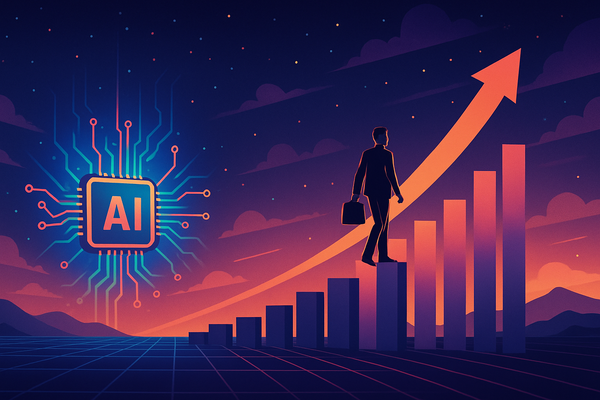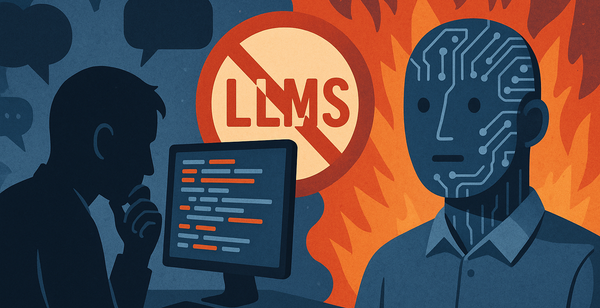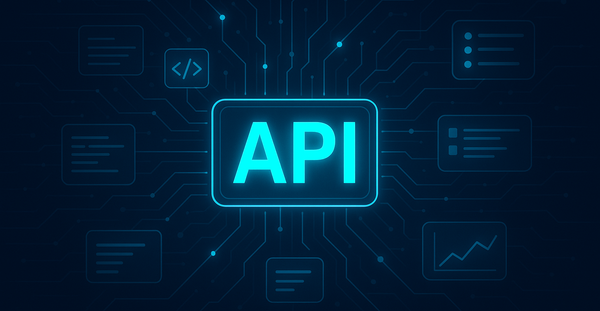The two paths of AI-enabled fintech
Good, bad . . . or maybe just unequal

I gave a talk last week at a conference outlining the divergent paths I see for consumer welfare as LLM-based tools evolve. Here is a somewhat condensed version of that presentation.
I: The Death of the Confusopoly
Huge portions of the worldwide economy depend on the basic concept of the confusopoly, which involves using overwhelmingly complex pricing and subscription structures to expand margins while offering effectively commodity products. Cell phone plans are probably the best example: consider that Verizon has three Unlimited plans (plus an Unlimited addon that can be paired with other plans), none of which is even close to being “unlimited” in the sense of the word that means “to be without a limit.” The entire point of the lineup is to obfuscate the real limits and befuddle consumers—either to trick them into purchasing an excessively costly plan or accidentally racking up excess usage fees (or both).
Of course, there are many more: almost every financial product falls into this category, along with software subscriptions, travel insurance (most insurance for that matter), broadband ISP plans, long-distance calling plans in the old days, etc.
In all of these industries, the companies selling the product could provide a straightforward overview of the benefits and fees, but it is in their interests to obfuscate what the product does and, especially, where consumers might incur additional fees. In many cases, almost the entire margin comes from this obfuscation. Consider that, while banks make about $12 billion annually in overdraft fees, these fees are buried deep in tiny legalize. Few consumers expect to pay them in the volumes they do, and even fewer likely realize that banks clear transactions from largest to smallest to maximize the number of discrete overdraft events. In one of the more humorous examples, the entire ISP industry collectively freaked out when the FCC suggested that they might have to reveal what their plans actually cost. Consider running a business whose margins are existentially threatened by having merely to state your prices!
Historically, regulation has failed to address this problem. Simply passing a rule that says “be clear about your pricing” rarely works, because there is no good way to specify what compliance looks like. Regulators end up in the “well, I know it when I see it” cul-de-sac, which is another way of saying “the circle of endless lawsuits.”
AI will completely upend this business model. It might be difficult for a human to read the entire Terms and Conditions of a JPMorgan Elite Free[1] Plus checking account or a Comcast Triple Blast iUltra ProGigabit uPower Unlimited[2] Party plan, but an LLM can digest those products and spit out a summary (or, even better, just tell you which one best fits your typical usage) in about seven seconds.
An LLM could easily review a consumer’s bank account history and determine if that customer routinely overdrafts and how his checking and savings accounts interact. For a user with low balances who flies close to the trees, an account with no overdraft fees but hefty international fees would probably make sense. For a more affluent globe-trotter, probably the reverse would be ideal. As terms and conditions change (“without notice,” of course), the model can proactively warn the end user.
In the “aligned-with-the-consumer” AI future, consumers will be better-informed, less easily exploited, and able to save significant money on entire swaths of expenses. Corporate margins will compress.
II: The Death of the Consumer Surplus
This future involves businesses using LLMs to build an economy-wide version of the Elite University Pricing Model. The EUPM is the most sophisticated pricing model in the history of capitalism, and it goes like this: tell us your entire financial history, show us your investment portfolio and all outstanding lines of credit, provide us with ten years of tax returns and a forecast of your net worth, and we will determine the absolute maximum price that we can charge you for our product.
Delta recently announced that they’re rolling out their very own EUPM: a pilot program to use AI to maximize ticket revenue. Airlines already have a low-fidelity version of this system in place, using time-of-purchase and time-of-travel to infer whether a trip is for business (likely non-optional and expensible) or leisure (almost certainly optional and paid out-of-pocket). All the way back in 2012, Orbitz pioneered showing Mac users higher prices than PC users. These ideas aren’t new; they’re just going to be supercharged by business-aligned AIs fed with data from the massive trove of data captured by all-seeing tech surveillance.
In this future, every business can query an AI to price every product a penny below your indifference point. Starbucks would be able to infer how much you’re willing to pay based on data from Oura about how well you slept last night, data from payroll providers about your income, and data from Facebook about your current emotional state.
Grocery stores are already preparing for this future by rolling out electronic shelf labels. Today, the use-case is to surge-price staples, but combined with fine-grained location tracking based on technology like iBeacons[3], every single customer could get a bespoke price, perfectly calibrated to their ability and willingness to pay at that exact moment.
Effectively, AI could render the concept of a consumer surplus obsolete. You would always pay, in every scenario, the maximum you could bear. This would be pretty bad for consumers.
III: The Weird Hacker Future
There’s also the possibility for a weird and very unequal future that will be analogous to today’s internet. To some extent, ad-driven business have already erased the consumer surplus for most web users. Social media sites calibrate their ad-load to each individual user’s maximum tolerance. Tech-savvy users, in contrast, have an almost entirely ad-free experience online using adblockers and other grey-market products[4] to modify how their browsers function.
I foresee an analogous world where, with a bit of Github-foo and a Magisk module or two, it’ll be possible to present yourself as an unemployed pauper who somehow slept perfectly for nine hours last night to every airline and coffee shop who tries to profile you. To most people reading this blog, that future probably sounds kind of fun and edgy, but consider for a moment how titanically unequal it will be: after all, wealth and tech-savviness (or at least connectivity to tech-savvy people) are very highly correlated. The only people who will be able to opt out of the EUPM will be those who are reasonably affluent in the first place.
Furthermore, aligned models will not be free. There will be free AIs of course, and they will be ten times as effective at manipulating their users-cum-marks as Facebook is today. Ask one of them which checking account will be best, and you’ll get a recommendation based on which bank paid the most to sponsor the LLM along with a suggestion to head to your local {{nearest Safeway}} to purchase {{highest-margin ice cream brand}}. Of course, the only companies that can afford to buy their way into the response will be the ones selling ultra-high-margin (i.e. overpriced) products. Aligned models likely won’t be all that expensive—I don’t think we’re heading into some top-1%-only dystopia—but the nonzero pricing certainly will contribute to inequality.
Far more important is the fact that aligned models will not be addictive, while the anti-user ones will be. Consumers will have to choose to interact with the non-free, non-addictive model that might tell them what they don’t want to hear as opposed to burning up their life interacting with whatever nightmare lotus trees Elon or Mark dreams up next. Self control will be the superpower of this century.
Finally, a word of caution to those reading this and excitedly writing up business plans based on path #2: we do still live a democracy, and leaders that deploy this kind of pricing model may be a bit dismayed by the ultimate consequences of enraging the country with such perceived unfairness. I think there’s a reason that the present-day defenses of Harvard and Columbia tend to focus on things like cancer research and esoteric constitutional law as opposed to defending their excellent product and fair pricing model. Last I checked, most grocery stores don’t have cancer research arms and billionaire donors.
Probably not free ↩︎
Definitely not unlimited ↩︎
Every time someone talks about how privacy-focused Apple is, I want to scream into a pillow. ↩︎
This isn’t to imply that there’s anything illicit about them—just that they’re deliberately a bit obscure, and no mainstream browser comes with the functionality out-of-the-box for fear of lawsuits. ↩︎




